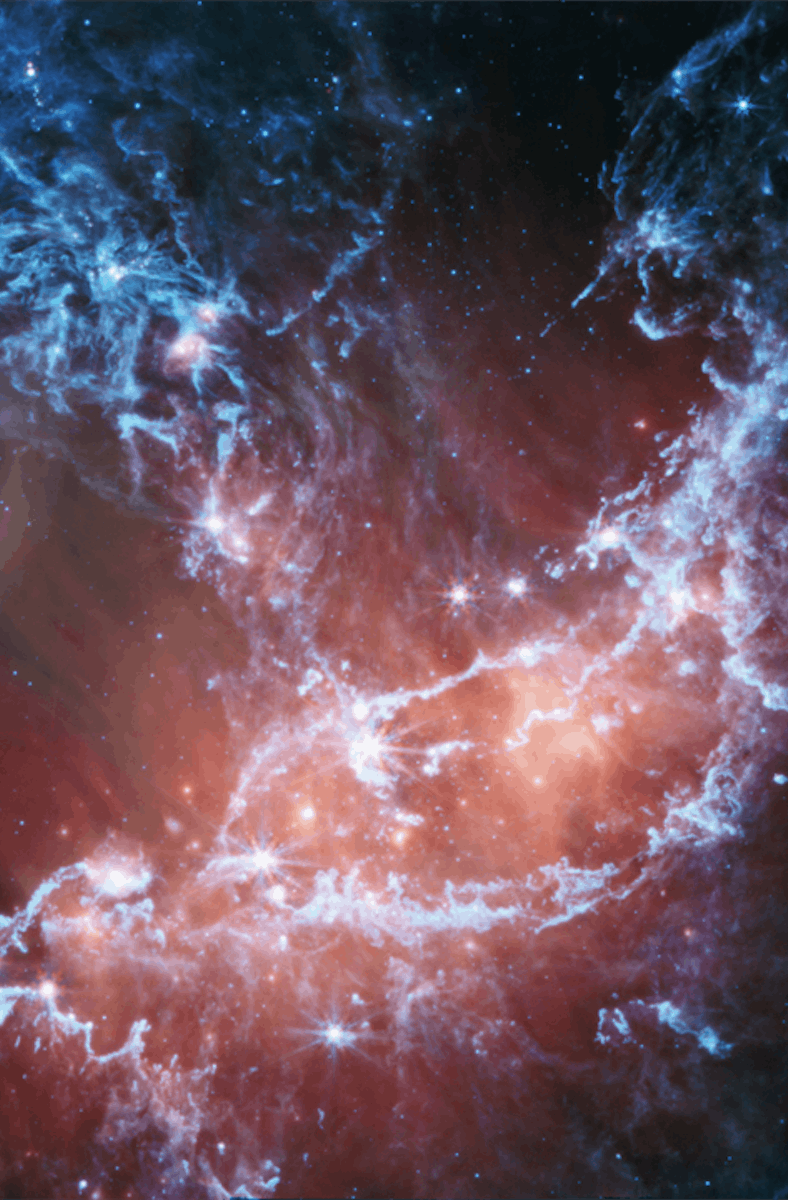New Webb Telescope Image Captures Newborn Stars Cradled in a Nearby Stellar Nursery
The Small Magellanic Cloud may hold secrets that defy our understanding of the universe’s oldest and smallest galaxies.

Delivering another stellar masterpiece, the James Webb Space Telescope (JWST) just captured a familiar nearby galaxy in a whole new light — with streamers of glowing gas and dust lit by the fires of newborn stars.
This region of dense gas and dust, called NGC 346, is the churning engine behind the bright new stars populating the Small Magellanic Cloud, a tiny galaxy that orbits our own Milky Way, but this isn’t our first look at this scenic stellar factory. The Hubble Space Telescope first revealed thousands of glittering stars in the visible spectrum. In near-infrared light — whose wavelengths are just slightly too long for our eyes to see — JWST revealed in January 2023 clouds of dust, which surprised astronomers. And now, in the even longer mid-infrared wavelengths, another JWST instrument reveals streams and filaments of gas and dust, glowing in the light of newly formed stars. The resulting image is an amazing example of how different the same patch of space can look in different wavelengths of light.
From left to right, NGC 346 as seen in visible light with Hubble, in near infrared with JWST’s NIRCam, and in mid-infrared with JWST’s MIRI.
A Thousand and One Stars
Exactly 1,001 stars are scattered throughout the filaments of dust in this image. (Yes, astronomers actually counted them.) Most of them are still shrouded in the dust clouds from which they formed, casting a bright but hazy glow on the nearby clouds. The brightest patches in this image are areas teeming with newborn stars.
Astronomers counted 1,001 individual stars in this image.
Because JWST’s Mid InfraRed Instrument, or MIRI, sees the universe in much longer wavelengths of light than human eyes can perceive, the team of people who created this image had to match those wavelengths to visible colors. The threads of blue are interstellar dust: mostly silicates (the same material that forms the Earth’s crust) laced with sooty patches of hydrocarbons. Warmer clouds of dust, heated by massive stars near the center of the nebula, glow red.
The dust clouds were a surprise to astronomers. Interstellar dust – the tiny bits of material that eventually coalesce into rocky planets – is made mostly of metals like silicon, magnesium, and iron. Those dusty ingredients are scarce in the Small Magellanic Cloud; that’s something our tiny neighbor has in common with much older, much more distant galaxies, whose light reaches us from 11 billion years in the past.
Astronomers expected that by the time stars formed in these galaxies, there wouldn’t be enough dust left over to form rocky planets. However, the huge clouds of dust in NGC 346 suggest otherwise, meaning that even in some of the universe’s oldest, smallest galaxies, rocky worlds like ours could have formed.
If a picture is worth a thousand words, then a picture with 1,001 stars is worth way more for astrophysicists exploring the origins of the universe.